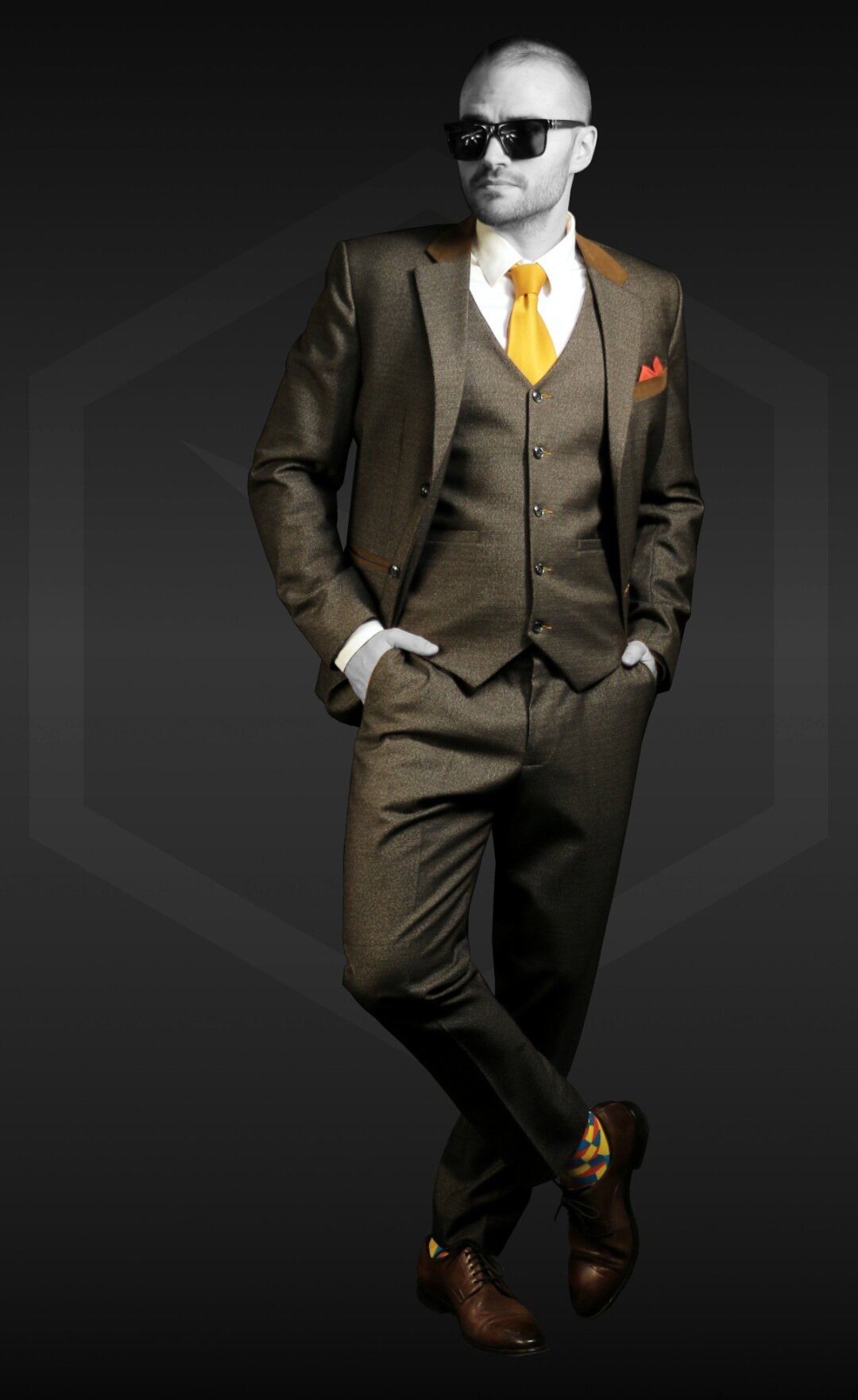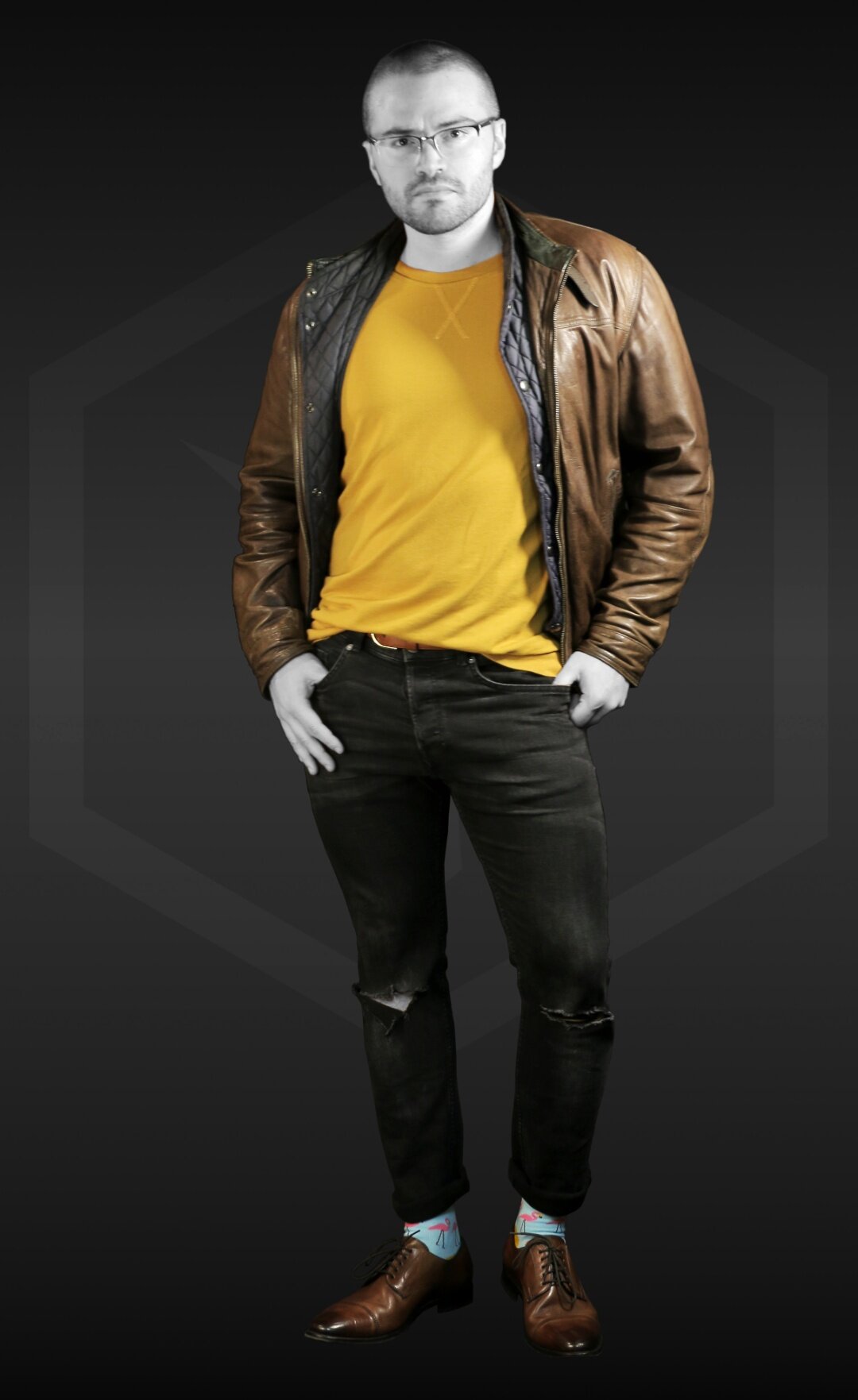Accent Colors in Men’s fashion – How and When to use them
What are Accents in Clothing?
When speaking of accents in clothing, you are referring to wearable accessories. More often than not, these accessories are colored or textured in ways that accent the whole outfit and gives it a specific character.
When it comes to colors in fashion, a lot of variables come into play. If you’re not new to accent colors in men’s fashion, you already know that accent colors do more than just complement the outfit – they define it.
The same suit can have a completely different appearance when combined with various contrasting pocket squares, neckties, shirts, or other accessories.
According to the University of Nebraska, accessories, when used correctly, enhance the appearance of harmony of line, color, and texture. The same goes for accent colors, being an essential part of clothing accessories.
Before we delve into how and when to use accent colors, let’s understand what accent colors mean.
What are Accent Colors in Clothing?
An accent color is any color used in an outfit or piece of fabric that contributes the least in terms of visibility from a distance.
Accent colors are generally the second and third colors in the outfit or fabric and are in much smaller proportion to the main color. They are usually not the first things that catch your eye, or to come to mind when describing an outfit.
To describe a person's outfit, you first mention the main color before the accent colors. For example, a gentleman can wear a navy blue suit with a burgundy tie, and a white shirt.
Here, the color of the suit is the main color (we like to call it the canvas color), while the color of the shirt and tie are the accent colors. Nonetheless, in most circumstances, the choice of shirt and tie defines the outfit and makes it unique.
More often than not, the accent color is one of the (if not the only) components of the outfit that stands out the most.
OUR NEWEST ARTICLE:
In the field of environment color planning, an accent color is defined as such, if it takes up a maximum amount of 15% of the surface area. The same can be said for accent colors in fashion, although this percentage should then only be regarded as a rough guideline.
In the example image above, notice that the least prevalent colors make the outfit truly unique and note-worthy.
Accent colors also include other details, like the color of belts and shoes, pocket squares, jewelry, and any other accessories men wear to complete their outfit. They can also appear in larger pieces of clothing like jackets or pants - it’s just rather uncommon.
How to use Accent Colors
Believe it or not, there are techniques for combining colors effectively to produce smart and classy looks.
As a general rule in men’s fashion, less is more. You don’t want to end up pairing too many colors and drawing too much attention because you look like a Christmas tree on steroids.
Often, it’s best to just put together a color palette of three to five colors and dress accordingly.
By the way: If you wish to accent like a pro, you should try color blocking. Read our article on the topic by clicking the link.
Here are a few guidelines to stick to, should you want to use accent colors effectively in your personal fashion.
Shirts
The color of your shirt may be an accent color, but it acts more like a second “main color” or “canvas color” in the sense that, like the main color, it provides a backdrop for other accessories to be highlighted.
That said, for a classier and sharper look, the shirt underneath a jacket should be of a plain color. For a more dazzling look, try going for more vibrant colors on a themed or patterned shirt.
This patterned shirt fits extremely well - mostly because it’s colors are analogous to both blue and red. | Socks: Spicy Chili
Besides being the ideal look for business and executive occasions, using a plain colored shirt also allows you to be more flexible with your jacket choice in more casual settings.
The most common shirt color is white, as it goes with any color or pattern of jacket imaginable, and it’s ideal for serious environments. Other plain and common accent color shirts include light blue for a navy suit or light pink underneath a black suit. You can never go wrong with these combinations.
Alternatively, you can use a patterned shirt, such as one with stripes, to spice things up now and then. The principal is to avoid wearing bold stripes or multi-colored stripes (unless you choose to do so purposefully). A two-color small striped shirt is usually the better choice – it’s only logical that the accent piece shouldn’t have many different accent colors, right?
Neckties
In most cases, this should be – and rightly is – the most noticeable feature in a man’s outfit. A tie tells a story and should indicate the mood and occasion for the outfit. Brightly and lightly colored ties make you appear more cheerful, while dark colors create a more business-like and elegant look.
More about dark versus light colors in clothing in our other article here.
There are two basic ways to use a tie with an outfit; on the one hand, it is used to pair with similar colors, and on the other hand, it is used to contrast any of the other colors that are being worn.
To go for a more subtle look, choose a tie that is of similar color as the base or canvas color. For example, using a cobalt blue tie with a navy suit and white shirt. This is a decent and classy, but sadly, also a bit generic look.
The second tie combination involves using a complementary color to accent and contrast the main color. Such a look is much more daring and makes any wearer seem much more self-confident. An example of that would be to use an intense red or even orange tie with the same navy blue suit.
With regards to neckties, striped or patterned, spotted or plain, bright, or dark-colored, they all work well depending on the occasion. The primary determinant in the type of tie you should use is the color and style of the shirt you wear – another reason why the shirt is a little more than an accent piece.
Haven’t read enough about tie colors? Here’s an article about how to choose the right tie color.
Pocket squares
The use of pocket squares is less widespread in our day to day lives and they rather tend to be one of those accessories you include on special occasions, like when you’re feeling particularly stylish. Though you may look overdressed using a pocket square at work, it improves others' perception of your style and class.
Therefore, we suggest wearing pocket squares for classy events and dinners. Such occasions are perfect for showcasing your knowledge of fashion by combining accent colors effectively.
Matching a tie to a pocket square and a pair of socks can be tricky. But if done correctly, the look can be stunning. | Socks: Prime Cubes
Pocket squares function in the same way ties do with regards to how their colors should be combined. They can easily be combined in similar (analogous) or contrasting (complementary) styles.
It’s essential to note that a pocket square and a tie should never be of the same color, though they must follow the same sequence – they must both be combined in contrasting or similar colors, not in opposing combinations. More about this in another article.
Belts & Shoes
The rules for belts and shoes are rather straightforward, but can be neglected easily. The most apparent mistake is made by combining a black shoe with a brown belt and vice versa. A more subtle mistake is to use brown shoes with a black suit – which is simply painful to observe…
Both examples are big fashion no-nos. Then again, sometimes it’s fun to break conventional fashion rules.
The concept of analogous and complementing combinations can also work with belts and shoes at casual or more relaxed environments. However, for most business and official environments, the neutral black, dark gray, or brown color scheme is the preferred choice for shoes and belts.
In the near future, we’ll be writing more about belt and shoe colors in two separate articles. Hang in there! In the meantime, subscribe to our newsletter to be informed as soon as they are published.
Jewelry & Other Accessories
In men’s fashion, the least pronounced clothing accessory should be jewelry. However, all the jewelry – watches, rings, cufflinks and so on – should be of the same color-type, since this adds to the elegance of an overall appearance. Either all pieces are gold, all silver, or any other color. The only exception to this rule is the wedding ring.
Generally, glasses should match your shoes (and belt) and be small rimmed. Specs with thin frames aren’t as trendy as they used to be and they might seem a bit old fashioned. Nevertheless, it is often the most classy look you could ever go for as a fellow “Spec-ulator”.
In our example below, the color of the frame of the glasses is brown. Therefore, they match the belt, the shoes, and even the leather jacket, which are all analogous versions and shades of brown.
Sometimes, on a black canvas, brown shoes can look great. Make sure to at least repeat the color once in another piece of the outfit. In this case, brown is repeated in the jacket and belt. | Socks: The Flamingo
Bracelets, earrings, or other small accessories you may choose to incorporate, should be of rather desaturated shades or tints so they don’t distract from the overall appearance and make you look too wild and disorganized.
Socks, of course
This is the ideal piece of clothing to use for fashionable accents (duh). In the example image above, our model (Patrick) is wearing The Flamingo.
The light blue base color of the socks contrasts strongly with the canvas colors (brown and yellow-orange, ...and black) of the whole outfit.
The pink flamingos on the socks themselves are a classic accent. They complement not only the canvas colors but also the blue base color of the socks. The pink in combination with the blue element in the socks stands out and defines the whole outfit!
Also, because the socks are also much lighter than the pants and shoes, they “pop” even more. More on the topic in our article on “should socks be lighter or darker than pants?”.
So, it’s safe to say that the concept of analogous and complementing colors also applies to socks. We at COLORBUX usually suggest trying out complementing color schemes and being a bit braver when it comes to putting together outfits. That is precisely why we sell only colorful socks. The world is gray enough...
How NOT to Use Accent Colors
We’ve examined the appealing ways to use accent colors, now let us look at the ways not to use accent colors:
The accent items in your outfit should not have too many accent colors of their own. Maybe your tie can be spotted or patterned, your shirt may be striped or checkered, but they should not have so many different colors in them.
You should not use too many brightly colored accent accessories at the same time. This will appear disorganized and chaotic. Stick to two accent colors at maximum.
It looks very bland and uninteresting to use accent pieces that are the same as the canvas color. For example, an all-black suit with a black shirt, black tie, and black shoes, or an all-white suit with a white tie, white shirt, and white shoes can look awkward. Here’s how to put together a monochromatic look effectively.
Don’t use multiple bright and bold colors to complement each other. Bright primary colors like red, yellow, and blue, should only be used to accent neutral canvases like black and gray.
When to use Accent Colors
Accent colors are more than just colors that spice up and complete outfits. Every accent color you employ in your outfit makes a statement about you. The colors you choose to complement your outfit communicate details about you, the occasion, and even your social position.
We cover the topic of “What Clothing Colors Say About you” in another article, but for now, here’s the short version:
To show stability
Blue signifies a level of stability and intellect. It is a favorite of most powerful men, royalty and world leaders. Apart from using a navy suit, you can also use a navy blue tie and pocket square to accentuate a black suit. Such combinations work best while wearing a crisp white shirt.
To inspire passion
To signify extreme desire, passion, and love you can choose to use a red tie with a black or other very dark-colored suit. This can be extremely helpful when you have to inspire people or motivate team members or employees.
In certain settings and contexts, the “Burgundy Black” can even look erotic. Combine an all-black outfit with a burgundy tie and matching burgundy dress socks should you want to appeal to a particular other. This is subliminal sexiness at it’s best – use with caution!
To lighten the mood
No unhappy man picks up a yellow tie at random. Yellow is the happiest color and tends to brighten up any room.
Wearing a yellow accessory doesn’t just signify your cheerfulness, but it rubs off on others too. This can be particularly helpful if you hope to alleviate the gloom around you.
Yellow (or any analogous color) is usually not very business-like. In some cases though, that’s exactly what you need. We advise you to always make a statement – a well-educated statement. That’s what COLORBUX is here for.
By the way, bright and light colors often also make you look younger and more dynamic.
To signify power
Black is the most powerful “color” in the world. It expresses a quiet assurance that exudes confidence. Wearing a black tie with a gray suit, blue suit, or even a black suit, with a white shirt underneath is the easiest way to communicate power without saying a word.
In short: stick to very dark shades of colors to appear more serious.
Pro tip: Do NOT wear all dark and serious to a kid’s birthday party. You WILL ruin the mood – no joke intended, even though it is somewhat funny.
In the world of fashion, trends come and go, but the basic rules, combinations, and most significantly, class, remain constant. With accent colors in men’s fashion, feel free to experiment and develop your unique style, but don’t bend the rules too much.
OTHERS READ:










![Top 8 Best-Matching Colors [Which Ones & Why]](https://images.squarespace-cdn.com/content/v1/5d91f9da52210569ede7ff3a/1651242239176-CXWJHIC3RXVB7QT9A8IS/COLORBUX+Best+Matching+Colors+Top+8+Pairs+BANNER+Thumbnail.jpg)